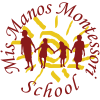PRACTICAL LIFE: The Practical Life area enhances the development of task organization and cognitive order through the care of self, care of the environment, exercises of grace and courtesy, and coordination of physical movement. The work chosen in this area gives each child independence and control over his own life by developing his muscles and coordinating his movements. The purpose of Practical Life exercises is to develop concentration, attention to detail, sequential actions, and good working habits that the child will carry throughout life.
SENSORIAL:The jobs found in the Sensorial area enable the child to order, classify, and describe sensory impressions. Each of the sensorial materials isolates one defining quality such as color, weight, shape, texture, size, sound, and smell. There is a certain joy for the child who discovers that his environment has order. This enables him to make order out of a multitude of experiences; hence, the learning process.
MATHEMATICS: The math area makes use of manipulative materials that enable the child to internalize concepts of number, symbol, sequence, operations, and memorization of basic facts. The child is introduced to the operations of addition, subtraction, multiplication, and division through work with concrete materials that teach the concept of quantity, and each appropriate symbol matching that quantity. The exercises in the math area not only teach the child to calculate, but they provide a deep understanding of how numbers function.
LANGUAGE: According to Dr. Montessori, the evolution of language begins with the infant’s unique capacity to absorb language fragments which form the basis of her development. Language arts include oral language development, written expression, reading, the study of grammar, creative dramatics, and children’s literature. Basic skills in writing and reading are developed through the use of sandpaper letters, the moveable alphabet, and various presentations that first teach children the sounds of each letter symbol, followed by the matching of each sound with its accompanying symbol. After phonetic comprehension is mastered, reading development continues in a logical, sequential order. Reading is considered an individual skill and most of the children in class will be working at different levels. The child must be allowed and encouraged to develop intellectually at his/her own pace if the joy of learning is to remain long-term.
SCIENCES and CULTURAL ACTIVITIES: The Montessori environment exposes the child to basics in geography, history, and life sciences. The child learns that science is simply an investigation of his surroundings; and just how his surroundings affect him and the control he has over them. An introduction to simple land forms and geographic basics enables the child to begin to understand where he lives and the planet we live on. Music, art, and movement education are part of the integrated cultural curriculum. By introducing these cultural staples, the Montessori classroom fosters individual expression and develops creativity in thinking and doing. The overall cultural curriculum stimulates within the child an awareness of the world in which she/he lives and the role we all play.
